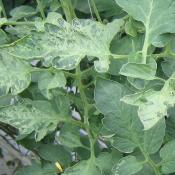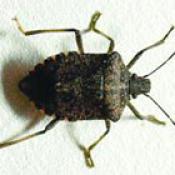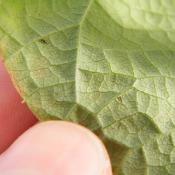Exotic Pest Fact Sheets
February 2024
Our Exotic Pest Fact Sheets have been updated with current information that is relevant to fresh tomatoes. You can download each fact sheet at the bottom of this page.
- Chilli thrips
- Tomato torrado virus (ToTV)
- Tomato leafminer
- Pepino mosaic virus (PepMV)
- Vegetable leaf miners
- Flea beetles (Epitrix sp.)
- Capsicum chlorosis virus (CaCV)
- Potato spindle tuber viroid (PSTVd)
- Black bean aphid
- Viroids
- Tomato Yellow Leaf Curl Virus (TYLCV) and Tomato Infectious Chlorosis Virus (TICV)
- Tomato Pinworm
- Red Spider Mite
- Tomato Brown Rugose Fruit Virus (ToBRFV)
- Fall Armworm (FAW)
In the event of detecting any unusual pest or plant symptom, you should call the MPI EXOTIC PEST AND DISEASE HOTLINE 0800 80 99 66. This is for the greater good of the whole industry and the sooner you call, the experience has shown, the better the outcome.
Early Detection – Our Second Line of Defence
Tomatoes New Zealand Inc.’s (TNZ Inc.) main goal under the Government Industry Agreement for Biosecurity (GIA) is to keep new pests (including diseases) out of New Zealand. But we know that despite our best efforts there is the possibility that some may get past the border and be found in New Zealand – as was the case with the Tomato potato psyllid (TPP) and Potato spindle tuber viroid (PSTVd).
We want to be far better prepared for any new pests by creating a second line of defence – you! As growers, seed suppliers, crop protection suppliers or advisors, or scientists you are regularly in crops looking for things that are out of the ordinary.
Monitoring crops for signs of pests is something tomato growers do on a daily basis. This may be as simple as a walk through the greenhouse or part of a more formal scheduled IPM threshold monitoring programme. Growers being aware of what to be on the look-out for, greatly increases the chance that we can eradicate any "new" pests before they establish.
Fact sheets cover pests that are the most likely to enter New Zealand and/or would have the most significant economic impact on tomato growers. They provide details on what to look for and what to do if growers find anything unusual or suspect there may be a new pest that has entered New Zealand.
You can help by adding these pests to your general surveillance activities. The purpose of surveillance from both a grower’s perspective, and the obligation under the GIA agreement are much the same, that is, to notice anything different or unusual that needs to be monitored or responded to before it’s too late to effectively eradicate or contain.
Although fact sheets have been developed for some of the pests most likely to enter New Zealand, potential incursions are not limited to this group, so vigilance in identifying anything unusual is prudent during monitoring and surveillance activities.





